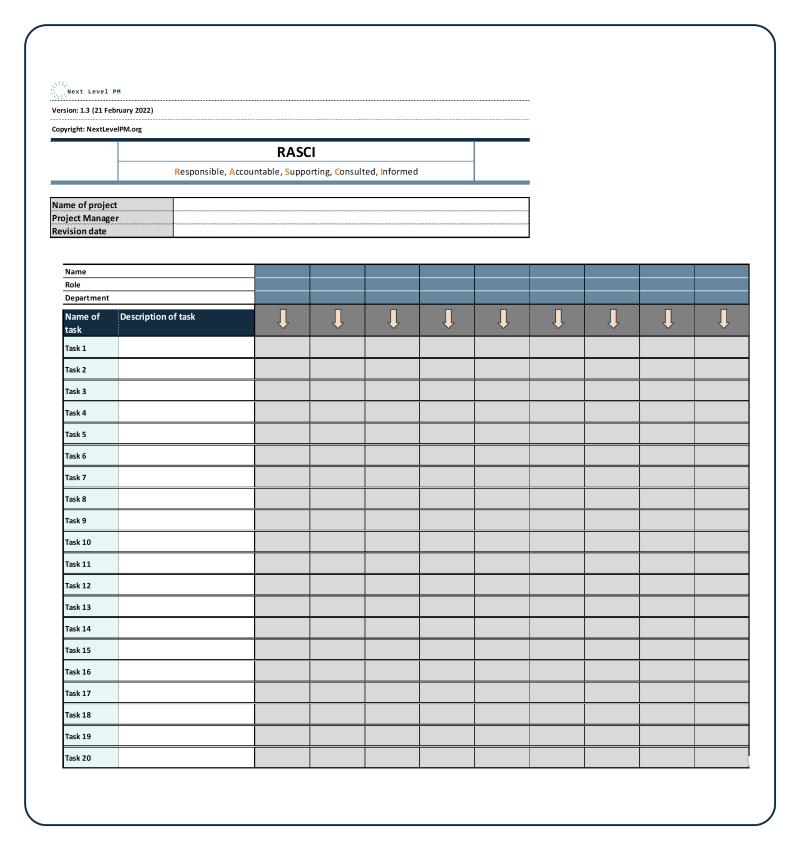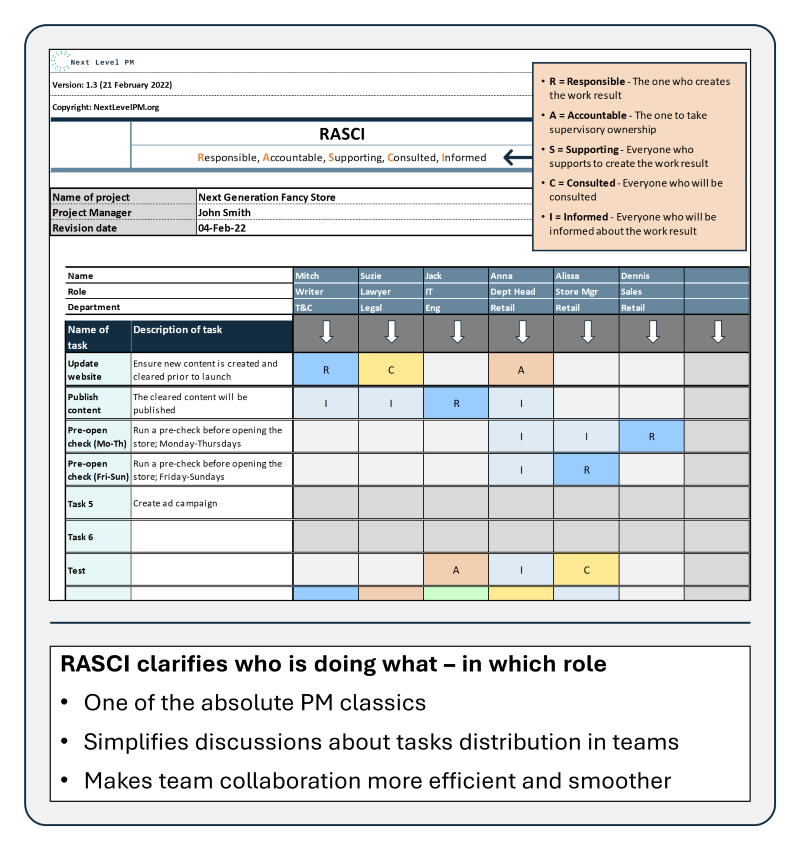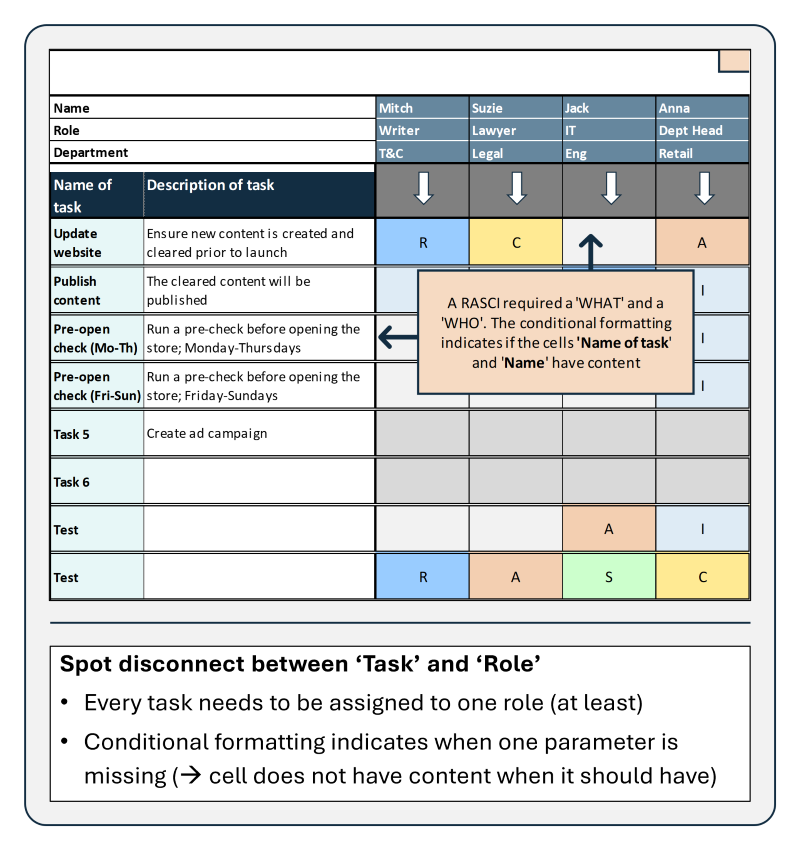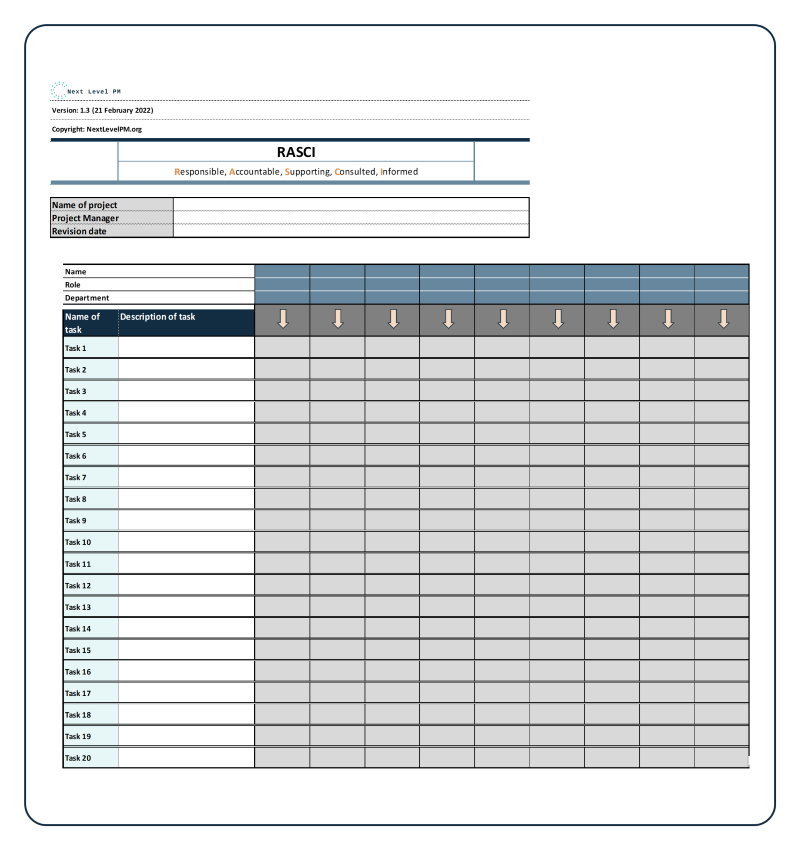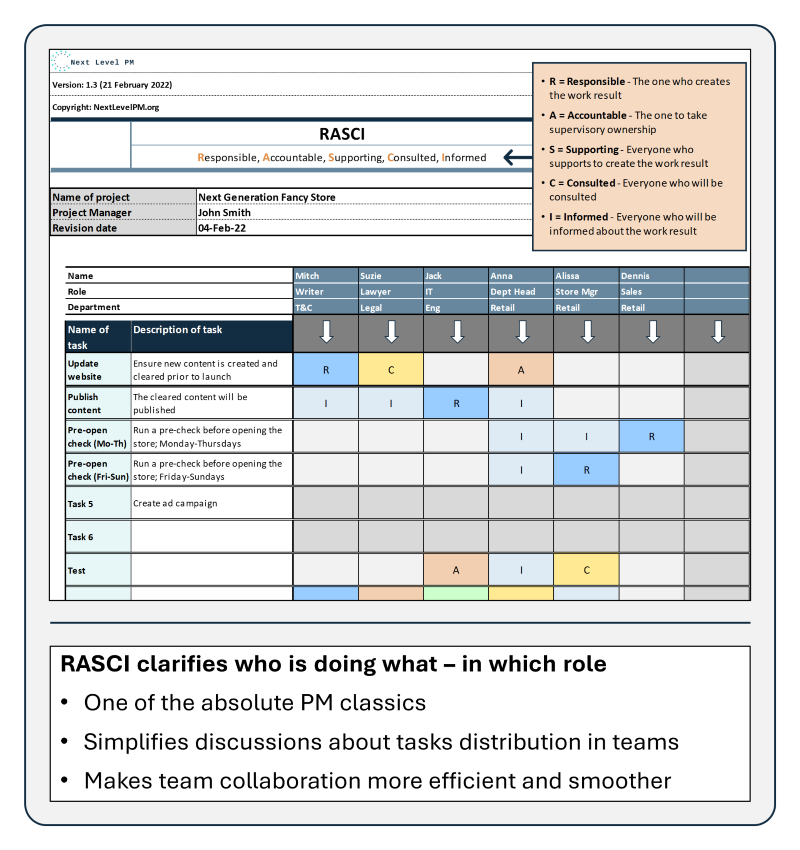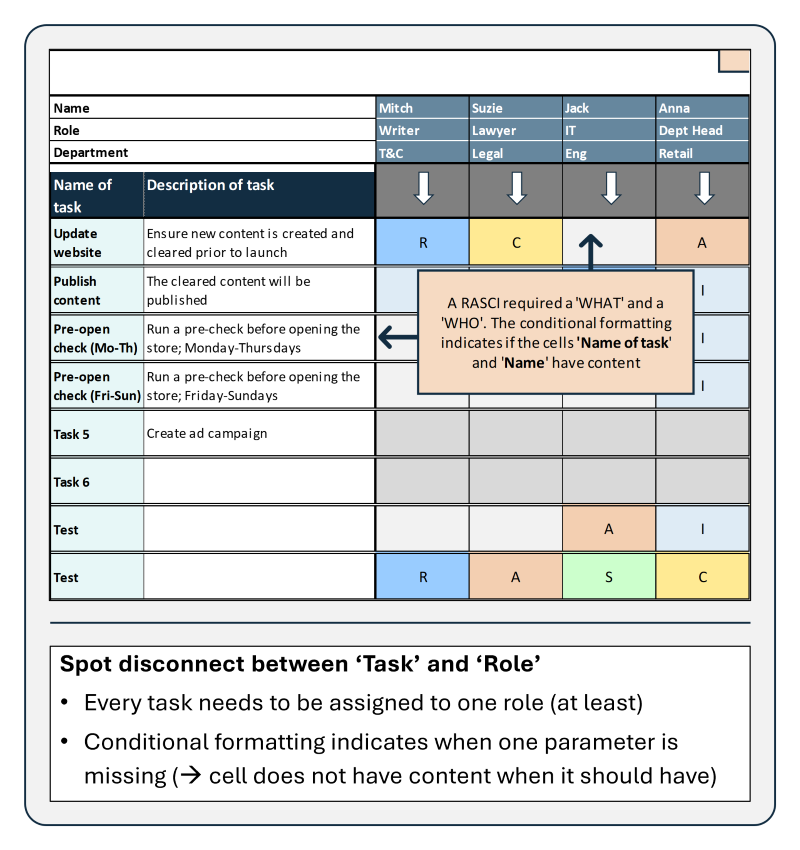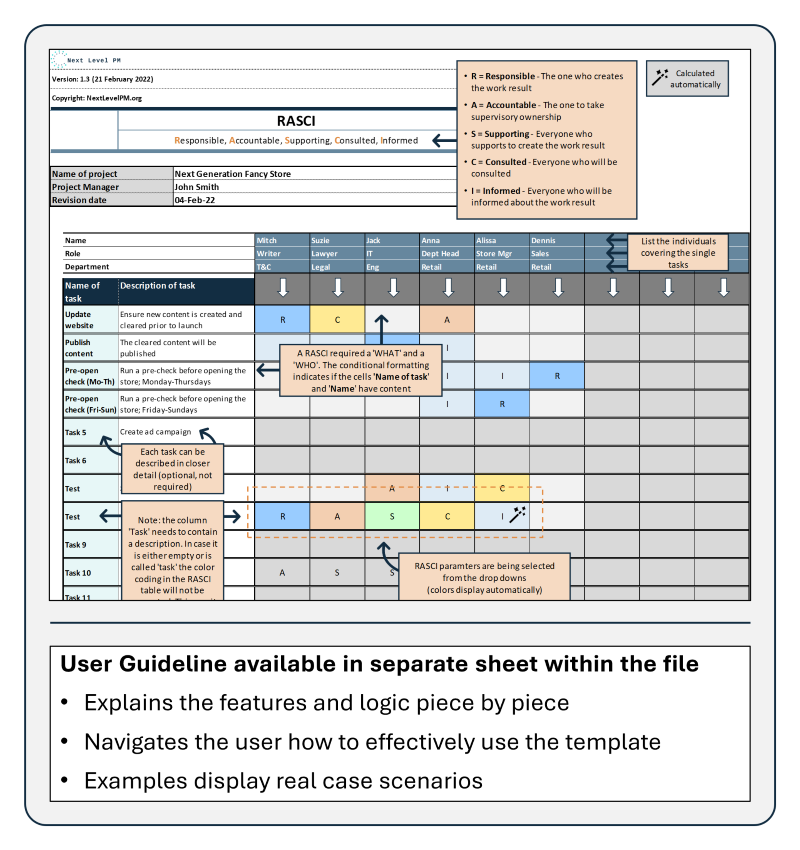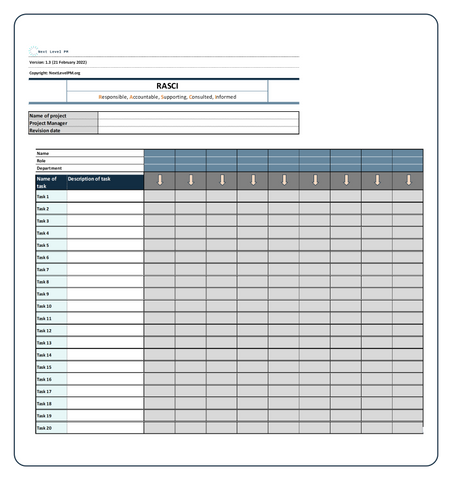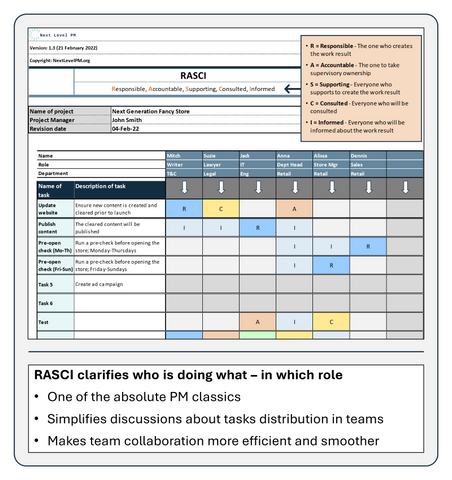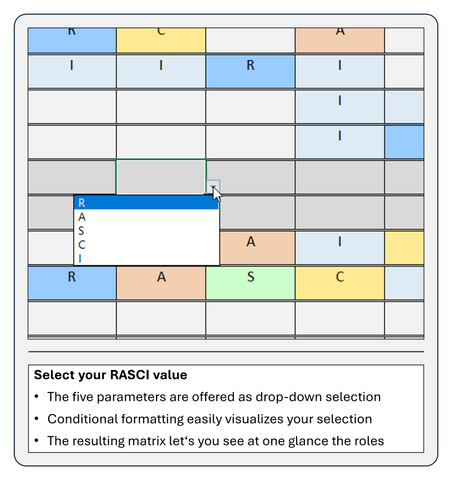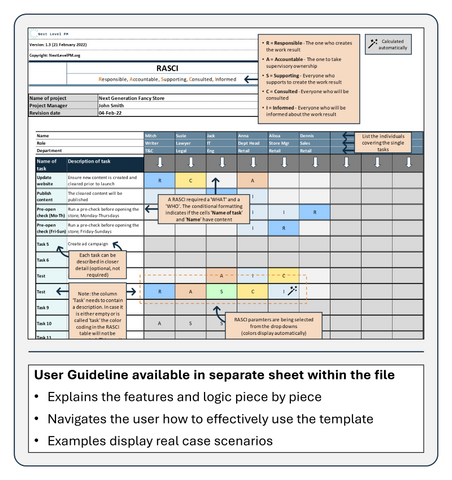RASCI Chart
Couldn't load pickup availability
A RASCI Chart will help you keeping your team organized and aligned. It connects the ‘what shall be created’ with ‘who is the team to deliver’. Unlike an Action Item List, a RASCI Chart sets the focus on a team working together and avoiding overlap or gaps in ‘who is doing what’.
Typically, the names listed in the RASCI Chart are the project team members – most of them specified in the Project Charter.
Which problem it helps to solve
Often, teams struggle to coordinate tasks effectively. It might be obvious who is taking ownership for the single tasks. When it comes to more people being required to deliver the work results, many teams struggle. Neither the roles are clear nor is it being specified which kind of contributions the single task owners require to be successful.
The RASCI template is a well-established framework in projects. It is being referred to by the Project Management Institute (PMI) and the International Project Management Association (IPMA) – among others.
A RASCI template is one of the Most Popular Project Management Templates we have to offer. Its usage is intuitive and super simple.
How it works
The tasks to be done are your starting point. Simply list these tasks in column D. And be pragmatic to find a sufficiently accurate wording, don’t worry too much about how you phrase the tasks. When filling out the RASCI you will fine tune the tasks anyhow.
Next, list the available people and their roles (rows 16-18). This gives you the full picture of the team and other stakeholders who might not be members of the project team
Afterwards, simply select the RASCI values from the drop-downs embedded in the template.
Keep in mind: it is best practice to have only one (!) Responsible and Accountable each. This prevents conflicting roles and challenges ownership for tasks.
What else to know
- Responsible: The one doing the work and delivers the final work result
- Accountable: The one to supervise the work, give direction and sign-off
- Support: The one(s) contributing to generate the work results. Often, these are the team members
- Consulted: The one(s) who are being actively engaged for consultation, best practice sharing etc
- Informed: The one(s) who need to be kept informed- but who do not actively contribute to a work result. Often these are lateral units and functions who need to be aware of what's going on

